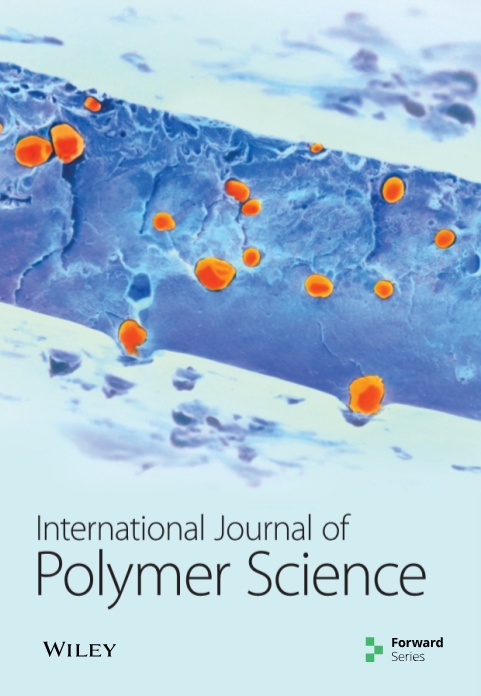以聚乙烯醇为交联剂研制铬刨花柔性复合片材
IF 4.4
4区 化学
Q2 POLYMER SCIENCE
引用次数: 0
摘要
皮革加工会产生大量含铬废物,其中一种是铬屑(CS),它们经常被填埋。由于铬(III)氧化为有毒的铬(VI),可能对环境和人体健康有害。本文采用CS和聚乙烯醇(PVA)为骨架,PVA为交联剂,采用简单易行的工艺制备柔性CS-PVA复合片材。采用FT-IR、SEM、STA和UTM对CS-PVA复合板材进行了表征。对CS-PVA复合片进行FT-IR分析,发现存在胶原酰胺带和PVA特征带对应的主导峰,表明复合片的均匀性。随着PVA用量的增加,CS-PVA复合片材的抗拉强度由0.21 N/mm2提高到4.17 N/mm2。随着PVA用量的增加,复合材料的柔软度从6.47 mm下降到3.7 mm, SEM显示复合材料的孔隙减少。添加更多的PVA使CS-PVA复合片材的热稳定性更高。这种简单的制备CS-PVA复合片材的方法成本低,环保,在服装、皮革制品、装饰、包装、鞋类等各个领域都有潜在的应用前景,同时也为工业废料的有效利用提供了有前景的平台。本文章由计算机程序翻译,如有差异,请以英文原文为准。
Development of Flexible Composite Sheet with Chrome Shavings Using Polyvinyl Alcohol as a Cross-Linker
Leather processing generates a huge amount of chromium (Cr) containing wastes, and one of them is chrome shavings (CS), which frequently end up in landfills. It may be harmful to the environment and human health due to the oxidation of Cr(III) to poisonous Cr(VI). Herein, CS and polyvinyl alcohol (PVA) are used for the preparation of flexible CS-PVA composite sheets, using CS as a skeletal and PVA as a cross-linker by a simple and facile technique. CS-PVA composite sheets are characterized by FT-IR, SEM, STA, and UTM. FT-IR analysis of CS-PVA composite sheets indicated the existence of dominating peaks corresponding to collagen amide bands as well as PVA characteristic bands, and it demonstrates the uniformity of the developed composite sheets. When the amount of PVA is increased, the tensile strength of CS-PVA composite sheets increases from 0.21 to 4.17 N/mm2. With increasing of the amount of PVA, the softness decreases from 6.47 to 3.7 mm, and SEM shows decreasing of pores in the composite sheet. The addition of more PVA makes CS-PVA composite sheets more thermally stable. This facile method of preparing CS-PVA composite sheet is low-cost and eco-friendly, having potential applications in various fields, including clothing, leather goods, decoration, packaging, and footwear products, as well as presenting promising platforms for effective utilization of industrial waste materials.
求助全文
通过发布文献求助,成功后即可免费获取论文全文。
去求助
来源期刊

International Journal of Polymer Science
POLYMER SCIENCE-
CiteScore
6.10
自引率
0.00%
发文量
55
审稿时长
>12 weeks
期刊介绍:
The International Journal of Polymer Science is a peer-reviewed, Open Access journal that publishes original research articles as well as review articles on the chemistry and physics of macromolecules.
 求助内容:
求助内容: 应助结果提醒方式:
应助结果提醒方式:


